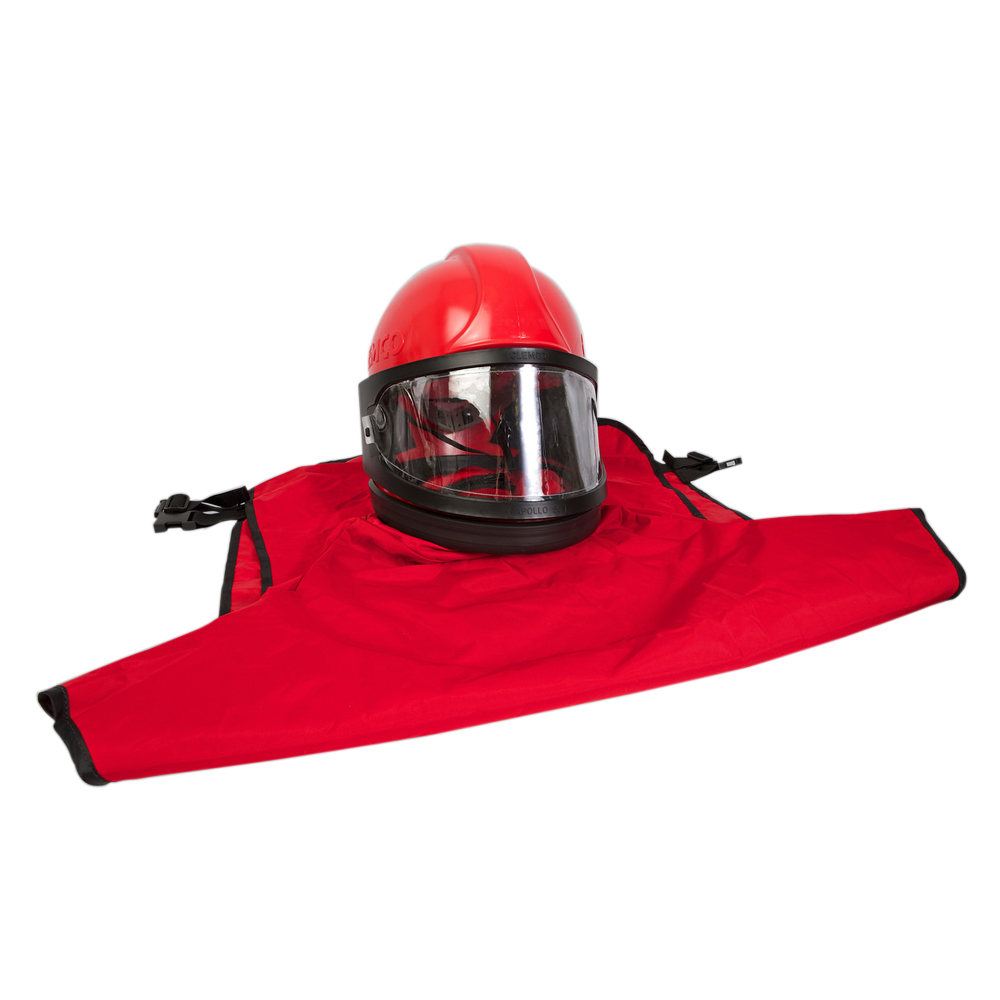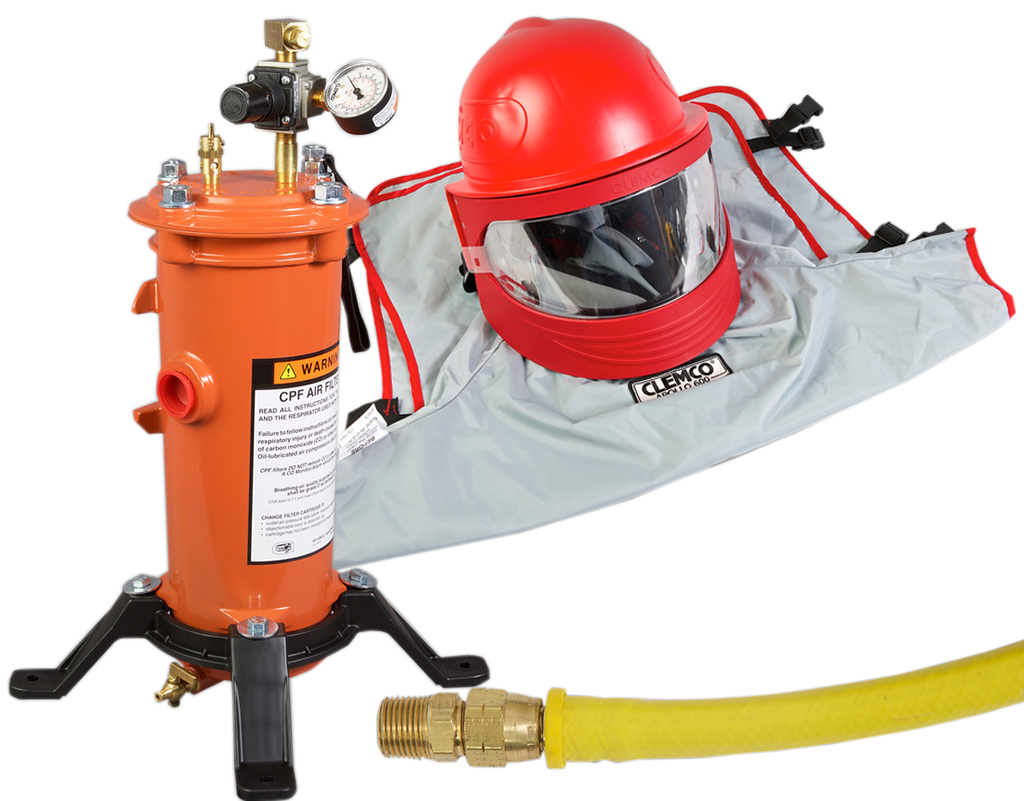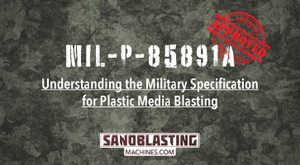Supplied Air Respirators: More Than Just a Fashion Statement
By on Oct 12th 2017
If you’re operating a blast machine, or are in the vicinity and may be exposed to abrasive blast media, you are required to wear appropriate safety gear. Such an ensemble includes abrasive-resistant clothing, leather gloves, eye and hearing protection, and a NIOSH-approved Supplied Air Respirator (SAR).

Because we all need air to breathe (and therefore survive), the breathing air system is particularly important for maintaining a safe blast environment. If you want to (literally) breathe easier, it’s important to choose the best system that works for you.
For starters, you’ll need a breathing air respirator in either a High Pressure (HP) or Low Pressure (LP) system. You can read more about the differences here.
No matter whether you go with the HP or LP option, Clemco’s Apollo helmets are hallmarks of safety, comfort, performance, and are the top choice in the blast industry. We offer Clemco’s full range of Apollo respirators, available in the Apollo 20, Apollo 60, and Apollo 600 helmet models.
Wondering which respirator is right for you? The Apollo 20 is the most economical option that delivers a lot of value without compromising on safety. The Apollo 60 features a full-view window and features a heavy-duty, length-waist cape. The Apollo 600 is the most durable option with added features for extra comfort and ease of maintenance. All helmets are NIOSH-approved.
Protect your beauty, your brains, and so much more.
The Occupational Safety & Health Administration (OSHA) requires individuals to always wear NIOSH-approved supplied-air respirators in the presence of any dust, including but not limited to handling and loading abrasives, blasting or working in the vicinity of blast job, and cleanup of expended abrasive. OSHA regulations also state that breathing air shall meet at least the requirements of the specifications for Grade D breathing air.
No dust is safe to breathe, whether it’s the media or potentially toxic coating being removed. This is why choosing the respiratory protection (one that meets OSHA regulations) is so key.
There are several hazards and potential hazards of a sandblasting operation. These include but are not limited to the following:
- Blast of abrasive
- Airborne dust
- High noise level
- Limited vision
- Hazardous substances
- Contaminated breathing air
- Ambient conditions
- Isolation.
With the right respirator for your jobsite needs, you can minimize several of those hazards.
Using a sorbent bed filter and carbon monoxide monitor in conjunction with your air-line breathing system helps eliminate moisture, oil, and particulates from incoming air and detects the presence of hazardous CO. The right respiratory equipment kept in proper working order will help protect you against breathing in environmental hazards.
Offering additional protection
Not only is the Apollo 600 helmet NIOSH-approved as a type CE continuous-flow respirator, but it also carries ANSI Z89-2003 approval as a category G hard hat. For an active construction zone where head protection is key, this helmet protects both your lungs and your noggin. The Apollo 60 also features hardhat protection.

Clemco’s replaceable lens system provides clear vision during blast operations (helping to eliminate the limited vision hazard) as well as eye protection. The Apollo 60 and 600 models offer the largest windows in the industry.
Exposure to loud sounds over an extended period of time can damage ears, leading to issues such as hearing loss and tinnitus. Abrasive blasting produces noise in the 130+ dB levels. NIOSH and OSHA recommend a hearing exposure limit of 85 dB over an average of eight hours. Blast helmets do provide good noise attenuation in high frequency level (2000 Hz+), but poor in low (125-500Hz). For the best protection, you should still utilize earmuffs in combination with your blast helmet. This combination can reduce noise levels by 24Db+/-. For perspective, a 5 Db reduction is approximately 30% quieter and reduced risk by 50%.






